A Summer Intern's First Week at the Manta Caribbean Project: Isla Mujeres, Mexico
- Karen Fuentes

- Sep 9
- 4 min read
By Case

Our summer internship with the Manta Caribbean Project has officially begun, and after one week, we can already tell this is going to be an unforgettable experience. The island, with its crystal-clear turquoise waters and vibrant local culture, is a perfect setting for this hands-on conservation project. From whale sharks to sea turtles, to the immense importance of community involvement, this week has been a whirlwind of learning, discovery, and genuine awe.
Manta Ecology and Global Conservation Efforts
The first thing we did upon arrival was dive straight into learning about manta ecology. We had a presentation on manta rays, their habitat range, and the global efforts being made to protect them. We learned about the challenges these magnificent creatures face, such as overfishing, habitat loss, and climate change. The session was a real eye-opener, giving us a deep understanding of why organizations like Manta Caribbean are so crucial to the survival of mantas and other marine life.
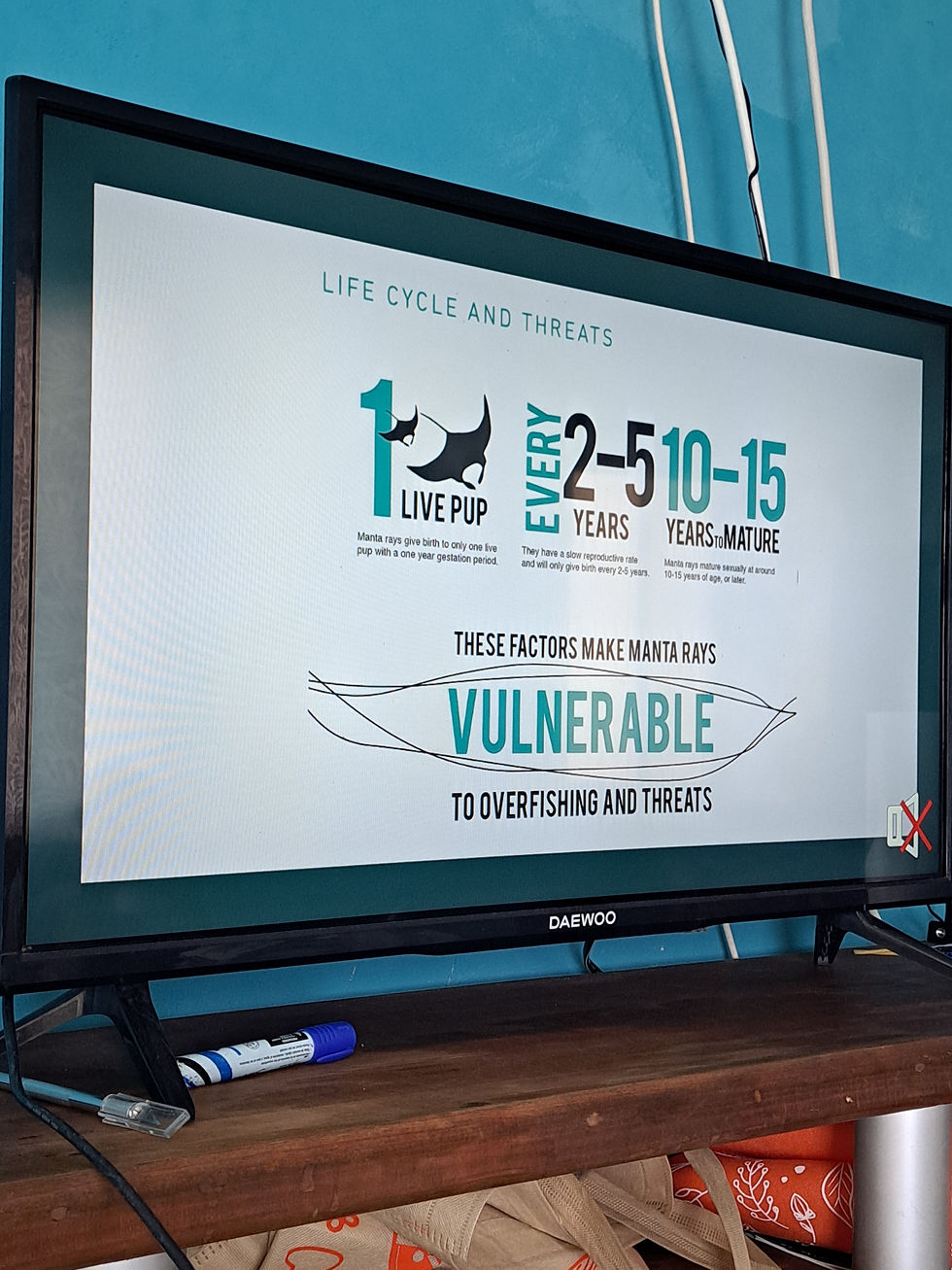
The conversation then shifted to the broader conservation landscape. We discussed the importance of non-profits and the unique relationships they have with various stakeholders—funding agencies, NGOs, park rangers, fishermen, and boat captains. This reinforced the idea that conservation isn’t just about protecting animals—it’s about fostering partnerships and building trust within local communities. One of the key takeaways was the importance of local involvement. Without the support of those who live here—whether through education, participation, or even advocacy—conservation efforts would be futile.
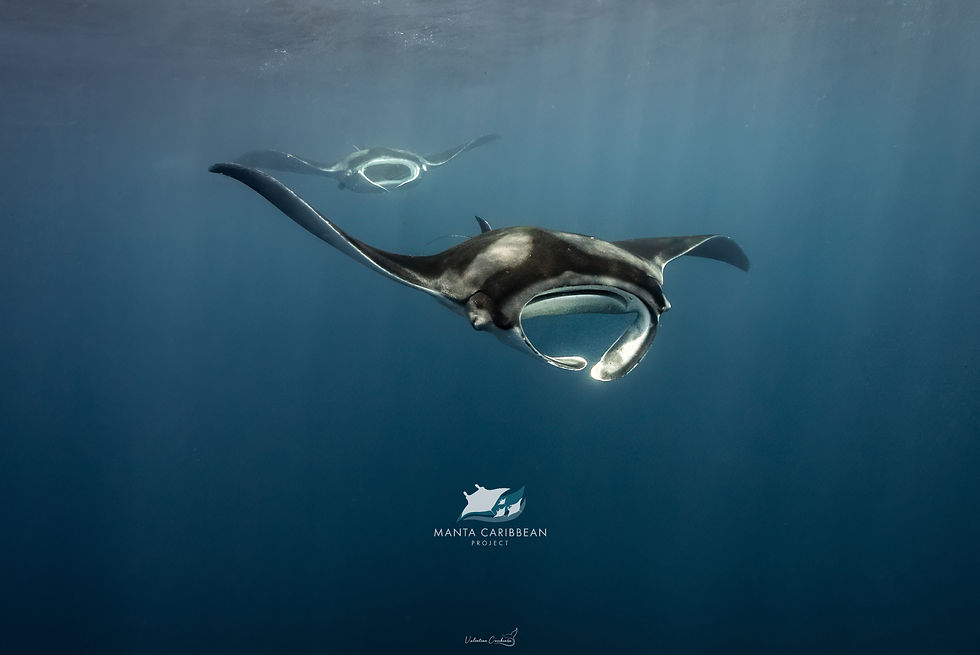
Navigating Isla Mujeres
In addition to time in the classroom, we ventured out into the local community. Isla Mujeres is charming but in some ways quite different from what most of us are used to. One of the first things we learned is that the island doesn’t have potable water. This means that for basic household needs, everyone uses large 20-liter bottled water jugs, which are exchanged at local stores. At first, this felt a bit odd, but it’s just part of daily life on the island.

We also had the task of navigating the island’s streets to pick up supplies—water, food, and essentials for the apartments we’re staying in. The narrow streets and colorful storefronts quickly became familiar, and there’s something wonderful about walking through town and seeing the community in action.
A Day on the Docks and Conservation in Action
We spent a morning on the docks, interviewing professional boat captains about their thoughts on mantas and the role a healthy manta population plays in the island's economy. In honor of World Manta Day, we wanted to get their thought in their own words how they felt about the mantas. These conversations underscored the integral relationship between local livelihoods and the health of the ocean—a collective source of pride and a unique resource with economic value.
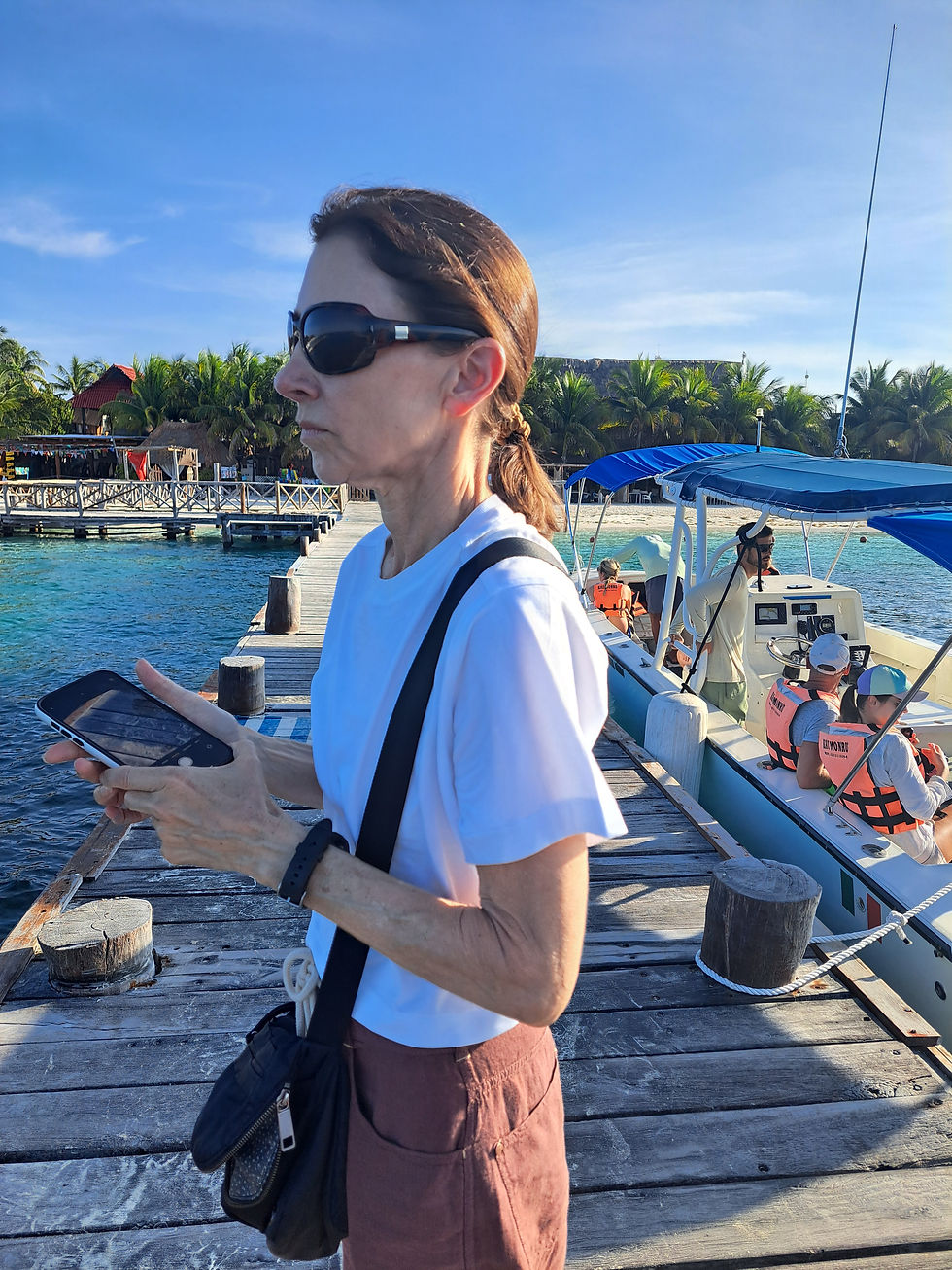
Learning the Field Survey Techniques and Manta IDs.
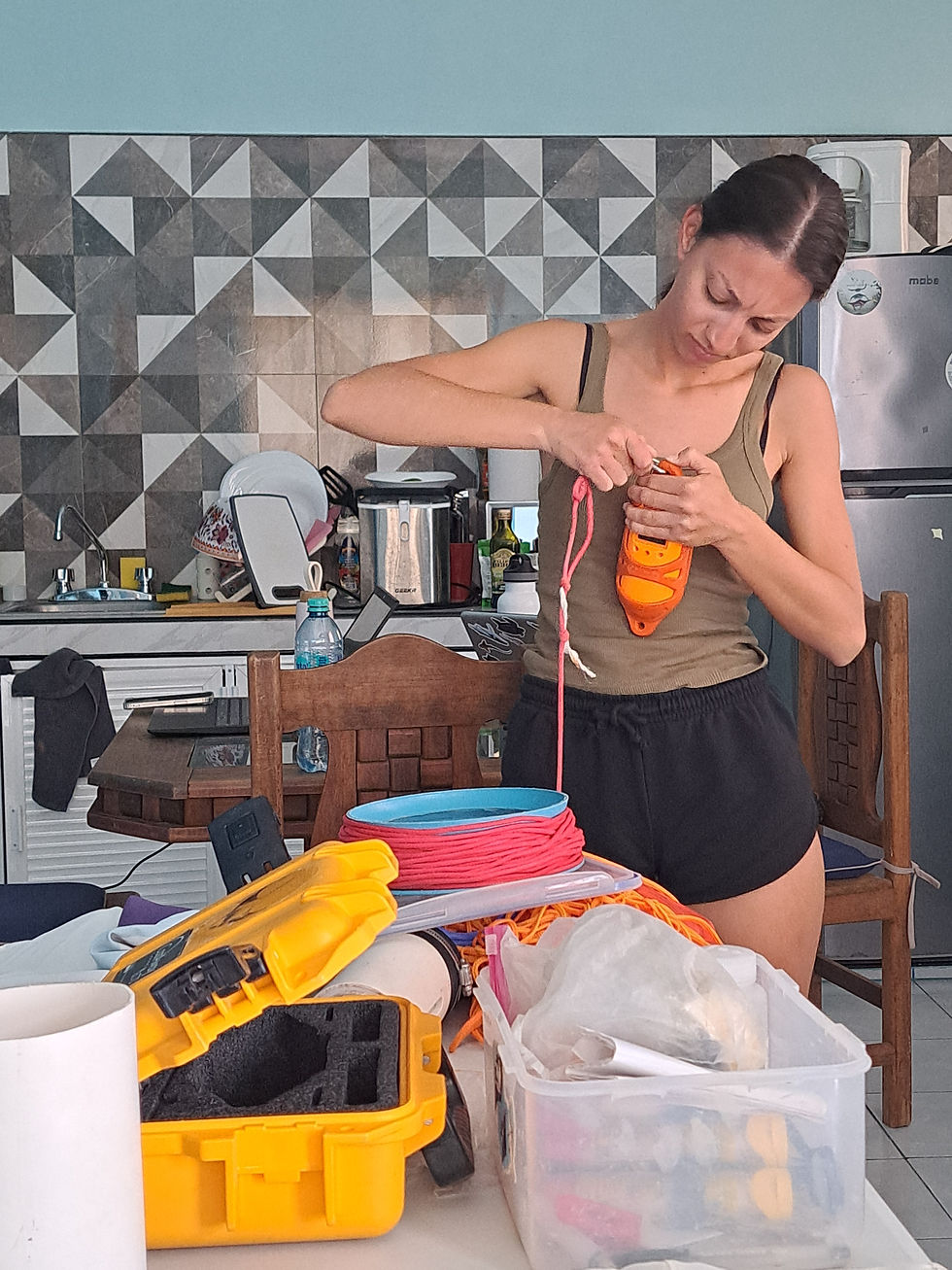
The next major learning experience came in the form of fieldwork training. We spent an afternoon learning the intricacies of field surveys, both on the boat and in the water. We were introduced to various research equipment, such as the photogrammetry device, CTD (oceanographic instrument used to measure water conductivity, temperature, and depth), microplastic samplers, and plankton nets. There are so many details to remember! But with practice we got the hang of assembling and disassembling the gear. We also spent time learning the proper techniques for freediving and using underwater cameras. This training will be essential when we head out for research surveys.
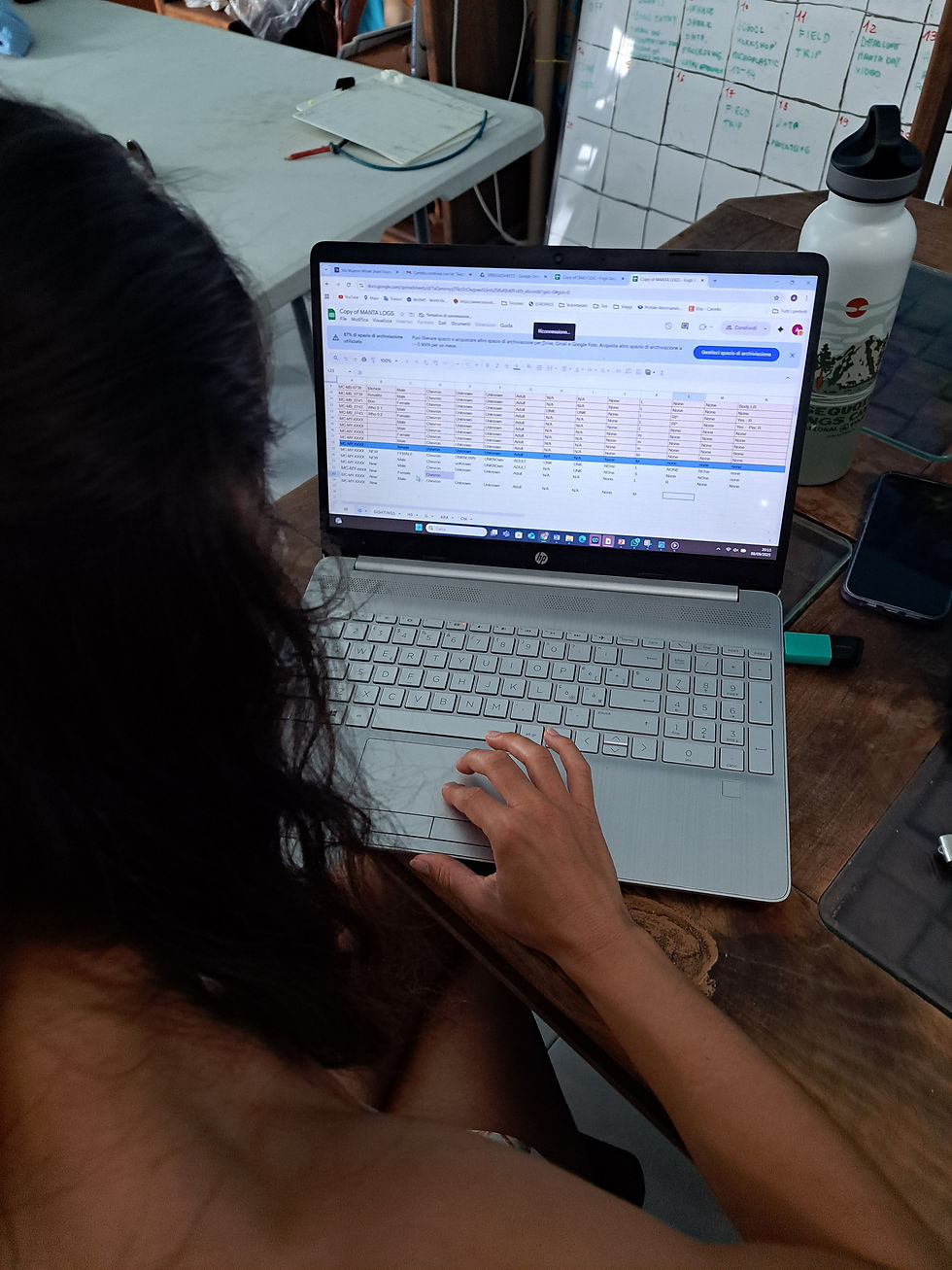
We also learned the how to complete formal manta IDs for the Manta Caribbean Project’s database, maintaining a database of manta ray identification data and photographs is essential for long-term research, conservation, and monitoring efforts. Each manta ray has a unique pattern on its underside, much like a fingerprint, allowing researchers to identify individuals over time. By systematically cataloging these ID photos along with sighting data—such as date, location, and behavior—scientists can track movements, population dynamics, and habitat use. Keeping the database accurate and up-to-date supports collaborative research with other Manta Trust affiliates around the world, helps detect population trends, and informs protection strategies for these vulnerable marine species.

Field Trip Day!
The highlight of the week had to be our field trip to Contoy Island National Park and the Whale Shark Biosphere Reserve. We started the day at 5:30 AM, meeting at the marina and boarding our research boat, along with some local volunteers who have been assisting the team with data collection on the island’s marine life for years.

By mid-morning were greeted with an incredible sight: whale sharks feeding! We were able to snorkel with them and found out you have to be in very good shape to keep up – for such gentle giants they can really move!

Later we had the rare opportunity to visit Contoy Island National Park where we did a beach clean-up and collected many bags of trash.
We also visited Contoy Island Station with its gorgeous white sand beach.
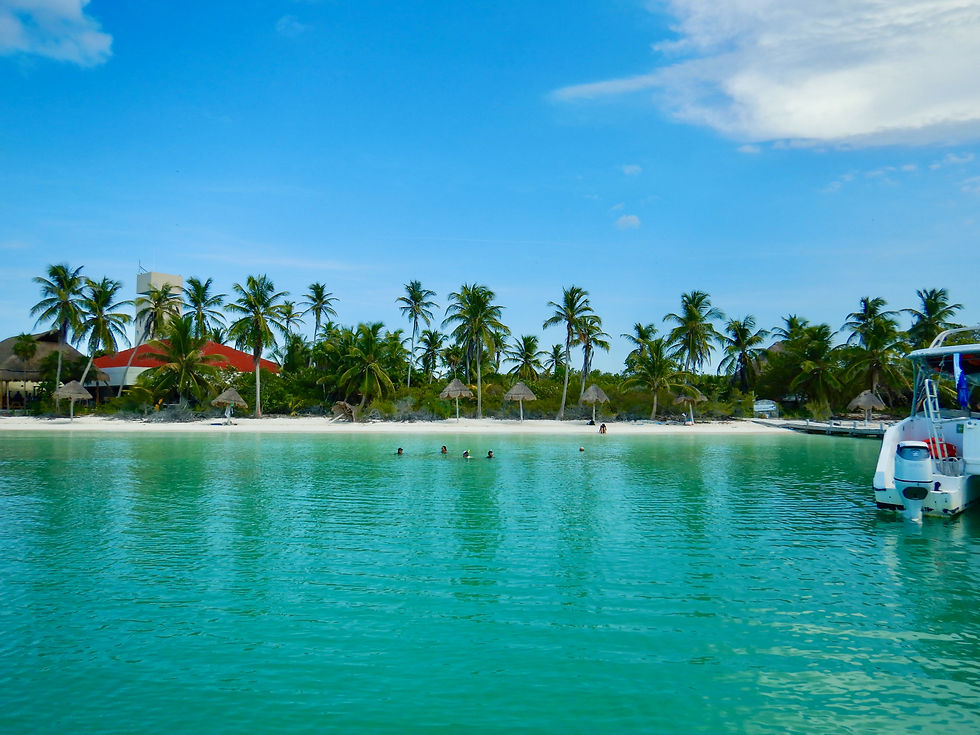
Contoy Island National Park is a tightly restricted and protected natural habitat, allowed under 200 visitors per day. The island has been protected by the Mexican government since 1961, and is now jointly managed with the National Commission for Natural Protected Areas (CONANP). We also collected sampling data all day: plankton, microplastics, boat census, and of course wildlife – whale sharks, dolphins, and many frigate birds!
This day really cemented the importance of protecting these natural spaces. The pristine beaches, the crystal-clear waters, and the wildlife that thrives there—all of it is so vulnerable to the pressures of tourism and pollution. Visiting Contoy Island and seeing conservation in action made everything we’d learned during the week feel incredibly real.
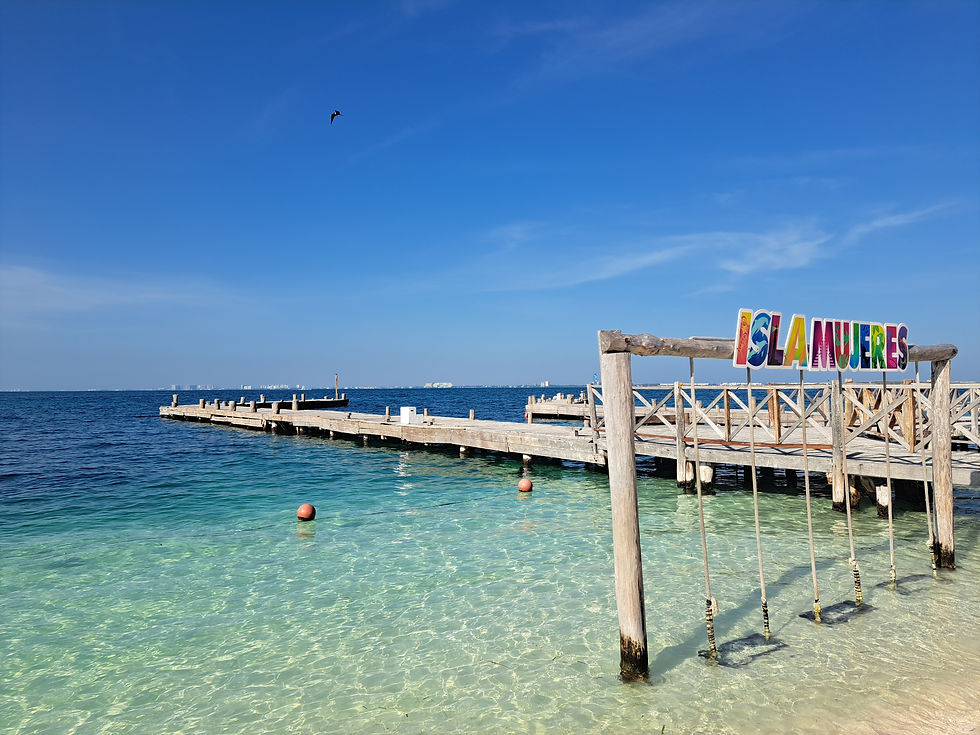
Looking Ahead
As the first week with the Manta Caribbean Project draws to a close, we’ve accomplished a lot, but also know there is much more to learn. It’s been an intense and informative week on marine conservation. From engaging with local communities to seeing endangered species up close, it’s clear that conservation is about much more than just protecting animals. It’s about people, partnerships, and the planet.
Stay tuned for updates from Isla Mujeres—there’s so much more to discover!

























Comments